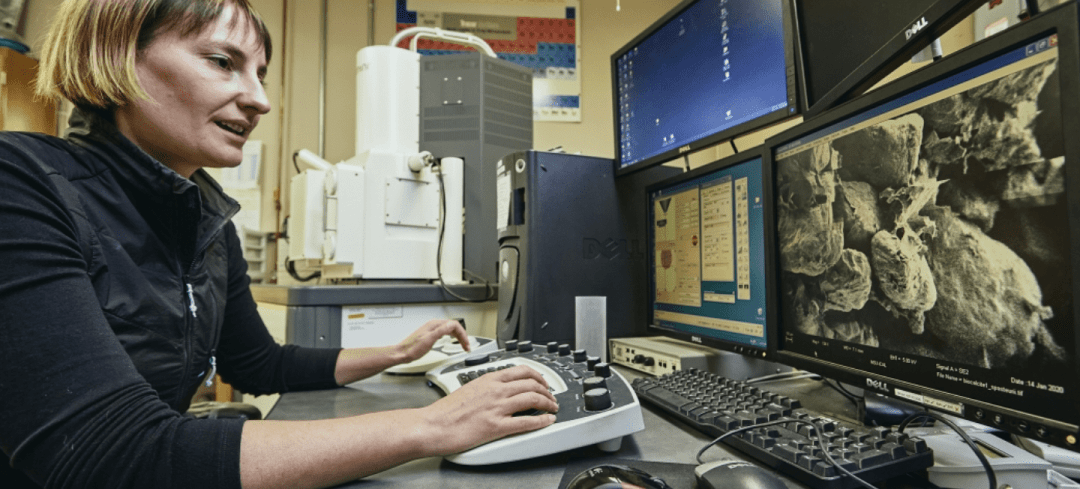Montana State researchers discuss living materials at annual biofilm meeting
Monday Jul. 10th, 2023

BOZEMAN — Driveways that purify runoff after a rainstorm, walls that cleanse air of exhaust and concrete that self-repairs its cracks — these may sound like fiction, but all are among the science being discussed this week at a meet-up featuring Montana State University researchers.
As part of the annual Montana Biofilm Meeting on July 10-13, MSU scientists specializing in the emerging field of engineered living materials will present on the topic during an all-day workshop on Thursday. The event is expected to draw representatives from 19 companies and agencies, with nearly 100 MSU researchers also attending, including students.
“We think there’s immense potential to functionalize our infrastructure materials so they can clean air and water and contribute other positive benefits,” said Robin Gerlach, a researcher in MSU’s Center for Biofilm Engineering, which organizes and hosts the yearly meet-up. “One of our goals with highlighting this topic this year is to help define and shape the field. It’s exciting.”
The annual meeting typically draws MSU’s industrial collaborators who are grappling with the negative effects of microbes that grow together cooperatively to form slimy mats called biofilm — or companies making products for controlling biofilm, like specialized disinfectants. Biofilm is best known for clogging pipes, forming plaque on teeth and festering in wounds, but the MSU researchers want to harness it for good, Gerlach said.
“We want to explore ways of thinking about biofilm not just as slime, but as a living machine,” said Gerlach, professor in the Department of Chemical and Biological Engineering in MSU’s Norm Asbjornson College of Engineering.
Introducing Thursday’s workshop is MSU researcher Chelsea Heveran, whose recent work has included exploring how to incorporate microbes and fungi into building materials that are less energy-intensive and could be used in situations where resources are scarce, such as in disaster relief.
“I think it’s likely in the future that a lot of the materials around us that are now inert will have a living component that performs some function,” said Heveran, assistant professor in the Department of Mechanical and Industrial Engineering. There’s a groundswell of interest and funding in the field, she noted. “This is an emerging scientific community. We want to spark collaboration and accelerate the progress that’s happening.”
This year’s focus on engineered living materials is an example of how the Center for Biofilm Engineering uses the annual Bozeman meeting to keep its partners from across the country up to date with the cutting-edge science, said Darla Goeres, the center’s industrial coordinator.
“We like to keep things fresh and have sessions that dig into big questions,” said Goeres, research professor in MSU’s chemical and biological engineering department. “Our partnership with industry helps keep our research very relevant and applied. It’s a collaborative process where we solve biofilm challenges together.”
The event is also a valuable opportunity for students, she noted. Four MSU graduate students — Hannah Goemann, Madelyn Mettler, Amit Acharjee and Yagmur Keskin — will present at the meeting, and many undergraduates will display their research at a poster session on Wednesday evening. Throughout, students can interact with company representatives and explore job opportunities.
Other sessions during the three-day event cover topics such as how to monitor and measure biofilm in hard-to-reach areas like inside pipelines and the latest techniques for treating biofilms that can be difficult to control. Companies like Procter & Gamble and Sherwin-Williams are regular attendees, Goeres noted, as is NASA, which is working on taming biofilms in the pipes of its spacecraft.
"The companies and others who come to the meeting are innovative,” Goeres said. “They want to be at the forefront and lead, so for them to come and learn about this emerging field of engineered living materials is a huge opportunity for them."
| Tweet |